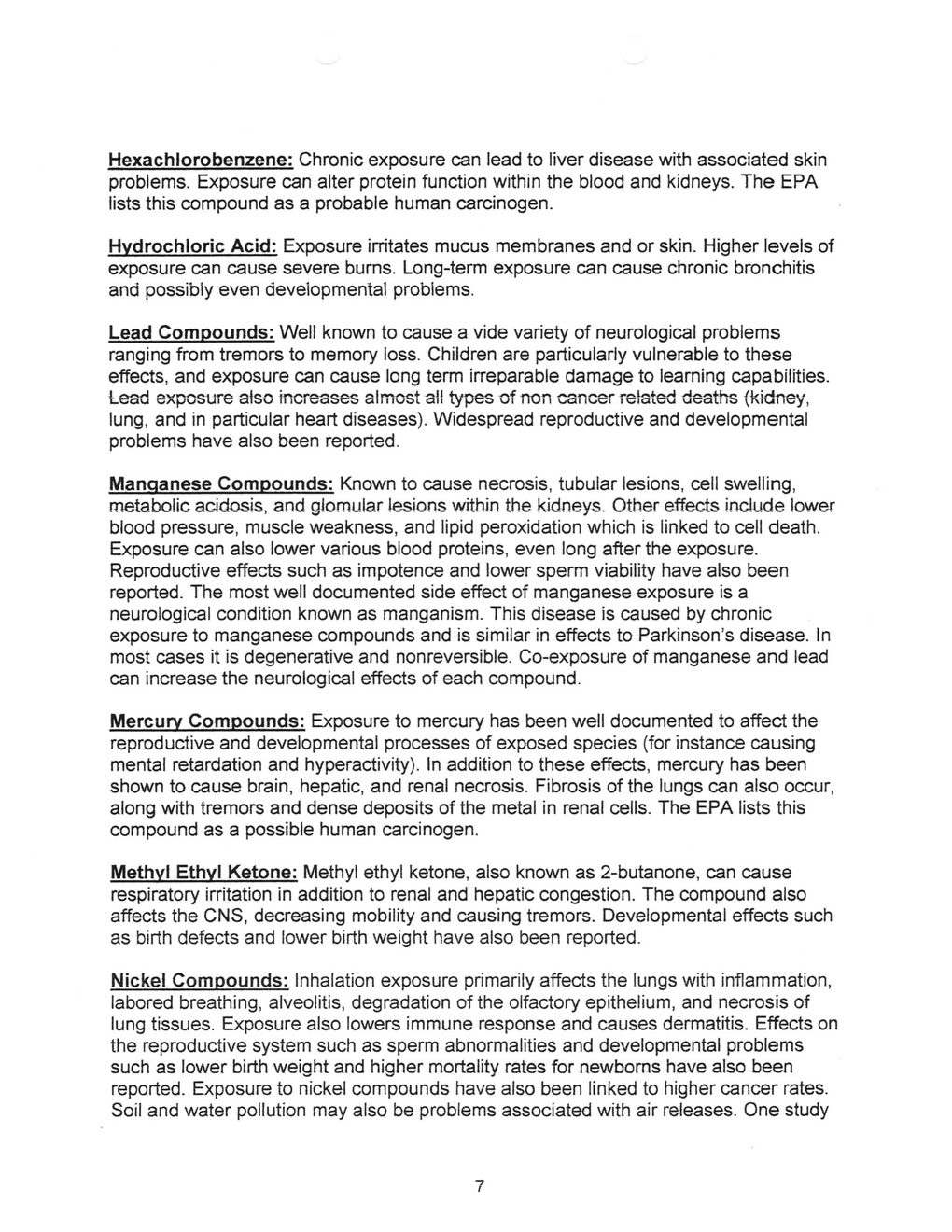This text was obtained via automated optical character recognition.
It has not been edited and may therefore contain several errors.
Hexachlorobenzene: Chronic exposure can lead to liver disease with associated skin problems. Exposure can alter protein function within the blood and kidneys. The EPA lists this compound as a probable human carcinogen. Hydrochloric Acid: Exposure irritates mucus membranes and or skin. Higher levels of exposure can cause severe burns. Long-term exposure can cause chronic bronchitis and possibiy even developmental problems. Lead Compounds: Wei! known to cause a vide variety of neurological problems ranging from tremors to memory loss. Children are particularly vulnerable to these effects, and exposure can cause long term irreparable damage to learning capabilities. Lead exposure also increases almost all types of non cancer related deaths (kidney, lung, and in particular heart diseases). Widespread reproductive and developmental problems have also been reported. Manganese Compounds: Known to cause necrosis, tubular lesions, cell swelling, metabolic acidosis, and glomular lesions within the kidneys. Other effects include lower blood pressure, muscle weakness, and lipid peroxidation which is linked to cell death. Exposure can also lower various blood proteins, even long after the exposure. Reproductive effects such as impotence and lower sperm viability have also been reported. The most well documented side effect of manganese exposure is a neurological condition known as manganism. This disease is caused by chronic exposure to manganese compounds and is similar in effects to Parkinson’s disease. In most cases it is degenerative and nonreversible. Co-exposure of manganese and lead can increase the neurological effects of each compound. Mercury Compounds: Exposure to mercury has been well documented to affect the reproductive and developmental processes of exposed species (for instance causing mental retardation and hyperactivity). In addition to these effects, mercury has been shown to cause brain, hepatic, and renal necrosis. Fibrosis of the lungs can also occur, along with tremors and dense deposits of the metal in renal cells. The EPA lists this compound as a possible human carcinogen. Methyl Ethyl Ketone: Methyl ethyl ketone, also known as 2-butanone, can cause respiratory irritation in addition to renal and hepatic congestion. The compound also affects the CNS, decreasing mobility and causing tremors. Developmental effects such as birth defects and lower birth weight have also been reported. Nickel Compounds: Inhalation exposure primarily affects the lungs with inflammation, labored breathing, alveolitis, degradation of the olfactory epithelium, and necrosis of lung tissues. Exposure also lowers immune response and causes dermatitis. Effects on the reproductive system such as sperm abnormalities and developmental problems such as lower birth weight and higher mortality rates for newborns have also been reported. Exposure to nickel compounds have also been linked to higher cancer rates. Soil and water pollution may also be problems associated with air releases. One study

Dupont Air Hearings Sierra-Club-Recommendations-(08)